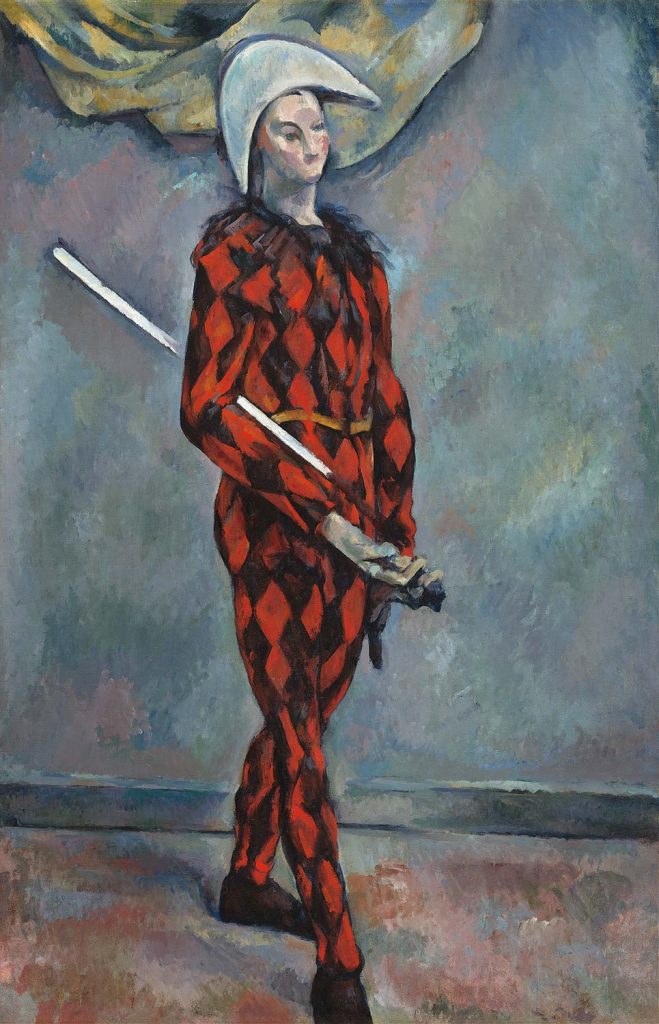Harlequin by Paul Cézanne was created in 1888 – 1890. The painting is in National Gallery of Art Washington D.C. The size of the work is 101 x 65 cm and is made as an oil on canvas.
Cézanne painted the austere and elegant Harlequin, one of four costume pieces including a Mardi Gras showing Harlequin and Pierrot and three variants focusing on Harlequin, between 1888 and 1890. The artist’s son Paul posed for Harlequin. Sensitively portrayed in Mardi Gras, his face in Harlequin was replaced by an impassive mask, a further, more abstract stage in Cézanne’s development of the theme. Harlequin’s traditional diamond patterned costume, bicorn hat, and the wooden sword that denoted his buffoonery have appealed to artists from the eighteenth century to the twentieth, and the character appears in Watteau’s Italian Comedians and Picasso’s Family of Saltimbanques. (Read more in National Gallery of Art Washington D.C.)
About the Artist: French artist and Post-Impressionist painter Paul Cézanne was born in Aix-en-Provence. In Paris, Cézanne met the Impressionist Camille Pissarro. Initially, the friendship formed in the mid-1860s between Pissarro and Cézanne was that of master and disciple, in which Pissarro exerted a formative influence on the younger artist. Cézanne’s early work is often concerned with the figure in the landscape… Read more
You can order this work as an art print on canvas from canvastar.com


